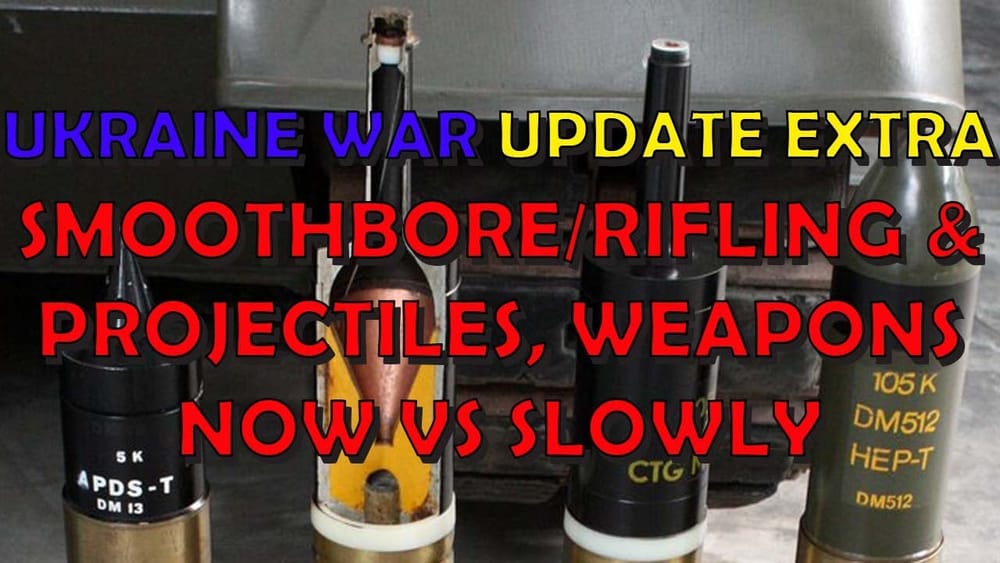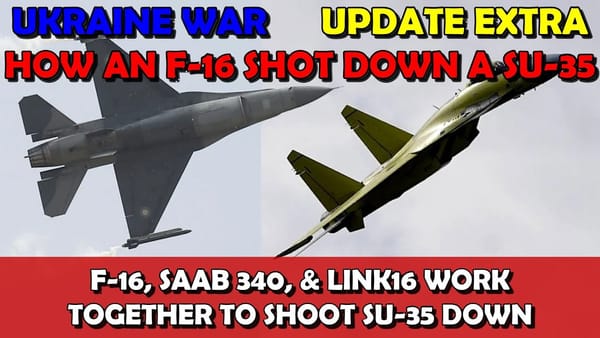Ukraine War Up. EXTRA: Smoothbore & Projectiles, Offensives, Weapons NOW vs Slowly
🤖
This summary has been produced automatically by an AI Large Language Model (LLM) without any human intervention. Whilst every effort has been made to prompt the LLM to produce accurate output, there may be inconsistencies, inaccuracies or hallucinations!
Table of Contents 📖
| Topic ID | Topic Title | Timestamp |
|---|
"Western tanks are as superior to Russian tanks as an F-35 is superior to a MiG-21."
Hello Team!
- Jonathan discusses whether the current Russian attacks in Ukraine are a pre-offensive offensive or the main offensive. If it's a pre-offensive, it's using up and attriting forces Russia would need for a proper offensive.
- He references retired Australian General Mick Ryan who suggests the recent Russian attacks are likely probes and reconnaissance missions to test Ukrainian strength and reactions.
- Russia is beginning these preliminary offensive activities for political reasons (Putin needs a victory), to disrupt future Ukrainian offensives, and to gain more defensible ground before Western aid arrives for Ukraine.
Offensive vs Defensive Warfare
- In war, you can't win battles defensively but you also can't lose them. To win, you eventually have to go on the offensive.
- However, if the offensive side is losing more troops and equipment as they attrit away in their offensives, the defenders are slowly gaining an advantage.
- So even though Ukraine is on the defensive now, they might be degrading Russia's offensive capabilities, allowing Ukraine to be more effective when they eventually go on the offensive.
Why the US is Not Sending Long-Range ATACMS Missiles to Ukraine
- In recent Pentagon meetings, US officials told Ukraine they don't have ATACMS to spare as transferring them would dwindle America's stockpiles and harm US military readiness for a future fight.
- The US may need ATACMS for a potential conflict with China in the Pacific theater.
- Other considerations include the difficulty of providing fighter jets to Ukraine due to training, logistics, and the contested airspace over Ukraine.
Rifled vs Smoothbore Barrels and Anti-Tank Ammunition
- Thomas Theiner, a former artilleryman, explains the differences between rifled and smoothbore barrels and the types of anti-tank ammunition used.
- Rifled barrels have grooves that spin-stabilize projectiles while smoothbore barrels use fin-stabilized projectiles.
- The three main types of anti-tank ammunition are HESH (High Explosive Squash Head), HEAT (High Explosive Anti-Tank), and APFSDS (Armor-Piercing Fin-Stabilized Discarding Sabot).
- HESH rounds are less effective against modern composite armor. HEAT rounds are less effective when fired from rifled barrels.
- APFSDS rounds are the most effective anti-tank munition. They have higher penetration power when fired from smoothbore barrels at higher velocities.
- Western tanks with smoothbore barrels and dense armor (e.g. M1A2 Abrams with depleted uranium) are superior to Russian tanks.
Wrap up
Jonathan thanks the audience for watching and reminds them to like, subscribe and share. He also mentions the ways to support the channel are in the video description.
Return to top⤴️
🤖❓ AI Debrief (post task) - anything the AI didn't understand
🤖💭 AI Plan (pre task) - the AI's step by step thought process
Steps:
Read through the transcript to get an overall understanding of the content
Identify the main topics covered in the video
Summarize each topic, ensuring enough context is provided
Use bullet points or numbered lists if appropriate
Bold or italicize key points for emphasis
Separate the introduction and wrap up sections
Include any relevant quotes, sources, or credits mentioned
Review the summary to ensure all key points are covered and the transcript is accurately represented



